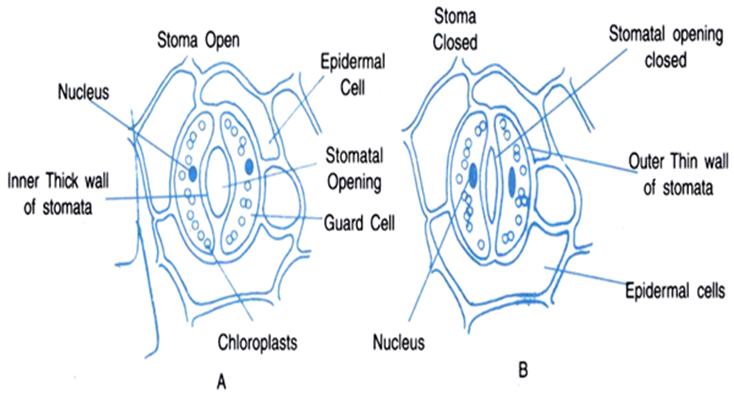The outermost layer of cells i.e., usually the epidermis is not continuous at some places e.g., on the surface of leaves or green herbaceous stems.
The epidermis of the young shoot and leaves contains numerous minute pores called stomata. Each stomatal opening is surrounded by two semilunar cells known as the guard cells.
The term ‘stoma’ (plural-stomata) is applied to the stomatal opening plus the guard cells. The guard cells are living and contain chloroplasts. Their inner walls (wall towards opening) are thicker and outer walls thinner.
Fig. 6.4. Structure of stomata. (A) Stomatal pour is open. (B) Stomatal opening is closed
Function of guard cells: The guard cells regulate the opening and closing of the stomatal pore. The guard cells swell when water flows into them causing the stomatal pore to open. Because inflow of water in guard cells causes the stretching and bulging of outer thin walls in converse shape. This drags thick walls apart leading to opening of the pore. When there is outflow of water from guard cells, the outer thin walls come to their original position resulting in closure of stomatal pore.
